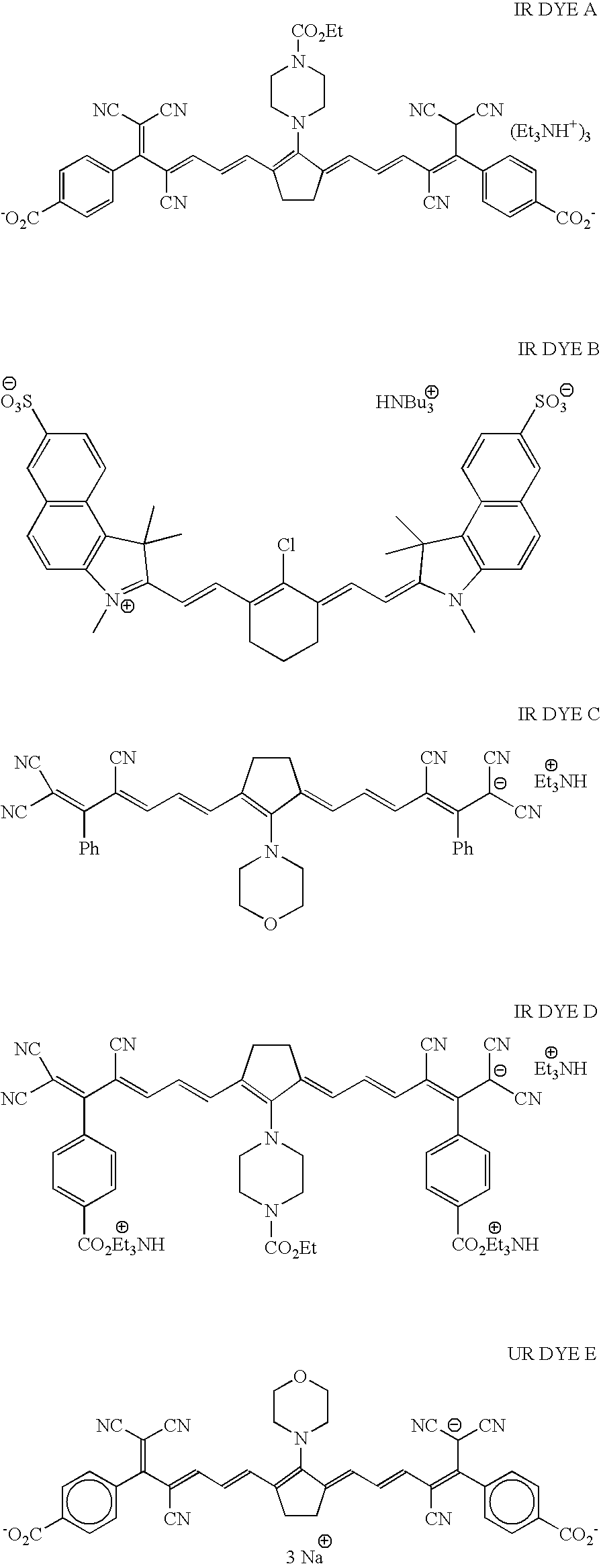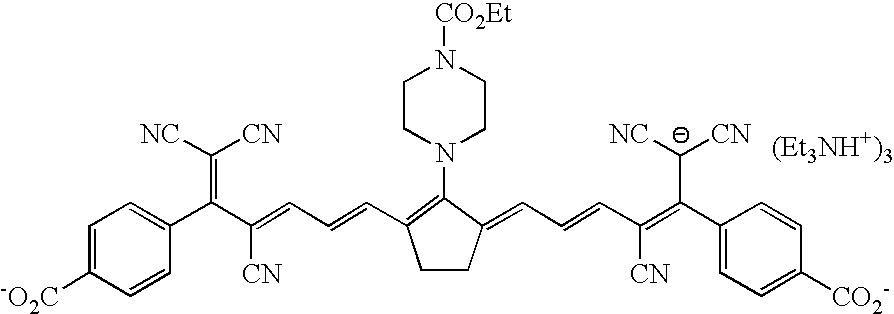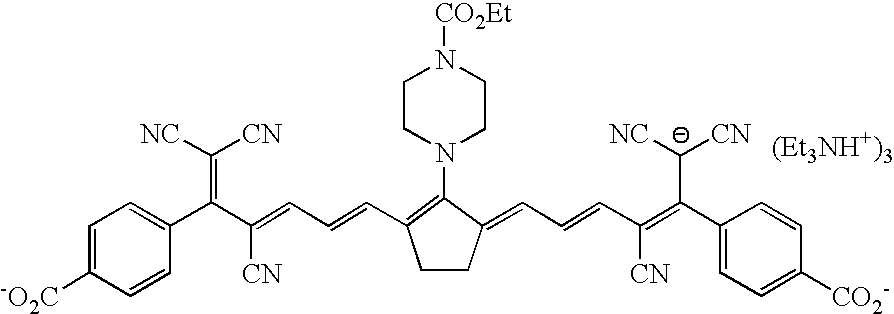Nanopastes as patterning compositions for electronic parts
a technology of electronic parts and compositions, applied in the direction of photosensitive materials, instruments, circuit masks, etc., can solve the problem of surprising low viscosity of dispersion, and achieve the effect of substantially increasing the conductivity of the resulting pattern area
- Summary
- Abstract
- Description
- Claims
- Application Information
AI Technical Summary
Benefits of technology
Problems solved by technology
Method used
Image
Examples
example 1
Ink-Jet Formation of a Printed Circuit Board
[0044]A sample of Nema FR4 N4000-2, an epoxy laminate available from New England Laminates Ltd, Skelmersdale, UK and composed of woven borosilicate glass fiber yarn, was modified so as to be free of copper layers. This was accomplished by immersing the laminate in a CuCl2 stripping solution, which was composed of water (100 kg), anhydrous copper chloride (40 kg), and HCl (60 kg of a 28 w / w % solution)), at 60° C. until the copper was removed. The remaining laminate was then washed with water and dried.
[0045]The resulting substrate was then placed on the platten of a JetPlate printer (available from Pisces-Print Imaging Sciences Inc., Nashua, N.H.) and a conductive pattern area was then produced by patternwise ink-jet application of Ag / Pd sol, a nanopaste having a metallic particle mean diameter of 11.1, supplied as a 5 w / w % solution in water and available from ANP. The pattern area was dried, and then the electrical conductivity of the pa...
example 2
Formation of an Electronic Part
[0047]A sample of Nema FR4 N4000-2 is modified as in Example 1 so as to be free of copper layers. The resulting substrate is coated via a wire wound bar with a layer of a thermally sensitive composition composed of Ag sol (90 w / w %) and IR dye A (10 w / w %). Ag sol is an inorganic nanopaste having a metallic particle mean diameter of 11.0 nm in a 5 w / w % solution in water, which is available from ANP, Korea. IR dye A is represented by the following structure:
[0048]A sample of the resulting plate precursor is then patternwise exposed at 195 mJ / cm2 using an internal test pattern on a Creo Trendsetter 3230, a placesetter operating at a wavelength of 830 nm and available from Creo Products Inc., Burnaby, BC, Canada. Exposure results in a color change from gray to copper-like. The sample is then immersed for 20 seconds in 956 developer, a phenoxyethanol based developer available from Kodak Polychrome Graphics, Norwalk Conn. The non-exposed areas are washed ...
PUM
| Property | Measurement | Unit |
|---|---|---|
| diameter | aaaaa | aaaaa |
| diameter | aaaaa | aaaaa |
| diameter | aaaaa | aaaaa |
Abstract
Description
Claims
Application Information
 Login to View More
Login to View More - R&D
- Intellectual Property
- Life Sciences
- Materials
- Tech Scout
- Unparalleled Data Quality
- Higher Quality Content
- 60% Fewer Hallucinations
Browse by: Latest US Patents, China's latest patents, Technical Efficacy Thesaurus, Application Domain, Technology Topic, Popular Technical Reports.
© 2025 PatSnap. All rights reserved.Legal|Privacy policy|Modern Slavery Act Transparency Statement|Sitemap|About US| Contact US: help@patsnap.com



